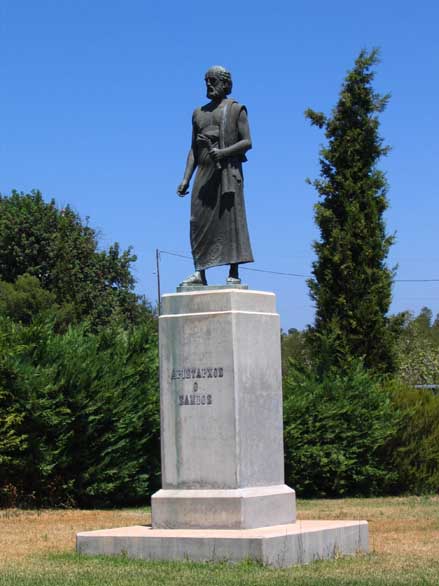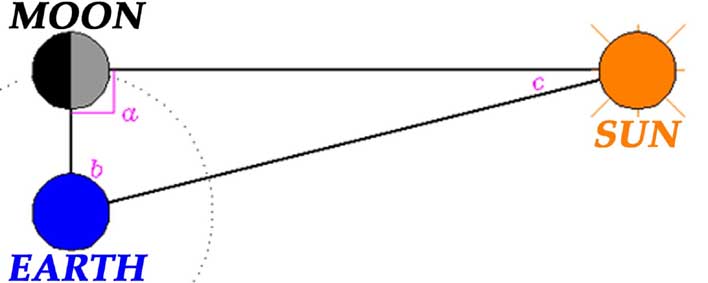
Aristarchus was a Greek Astronomer and Mathematician, born on the island of
Samos, in the ancient Greece. He is considered the first person to propose a
heliocentric model of the solar system. The only work of Aristarchus which has
survived to the present time is "On the Sizes and Distances of the Sun and Moon"

Aristarchus argued that the Sun, Moon and Earth form a near right triangle
at the moment of first or last quarter moon. He estimated that the angle (b)
was 87 degree. Using correct geometry concluded that the Sun was 20 times
farther away than Moon. Aristarchus also figured out how to measure the size
of the Moon and Sun during a lunar eclipse.
While sound in theory, in practice this procedure is highly inaccurate. This is
because Earth - Moon distance is much smaller than Earth - Sun distance,
implying that (b) is very close to 90 degree, so that (c) is in turn very small.
This has the consequence that a small measurment error on (b) translates in
a large variation in the ratio Earth-Moon/Earth-Sun.
Aristarchus measured b=87 degree, while the true value is in fact 89 degree
and 50 minutes. This may seen a small error, but because of the large error
amplification, Aristarchus' value leads to Earth-Sun/Earth-Moon=19
instead of the true value Earth-Sun/Earth-Moon=397.
Nonetheless, Aristarchus' calculation was the first to mathematically set
the spatial scale of the cosmos and his estimate showed that the Sun is
much further away from us than Moon is.
Copernicus himself originally gave credit to Aristarchus in his own
heliocentric treatise, "De revolutionibus caelestibus", where he had
written, "Philolaus believed in the mobility of the earth, and some
even say that Aristarchus of Samos was of that opinion." Interestingly,
this passage was crossed out shortly before publication, maybe because
Copernicus decided his treatise would stand on its own merit.